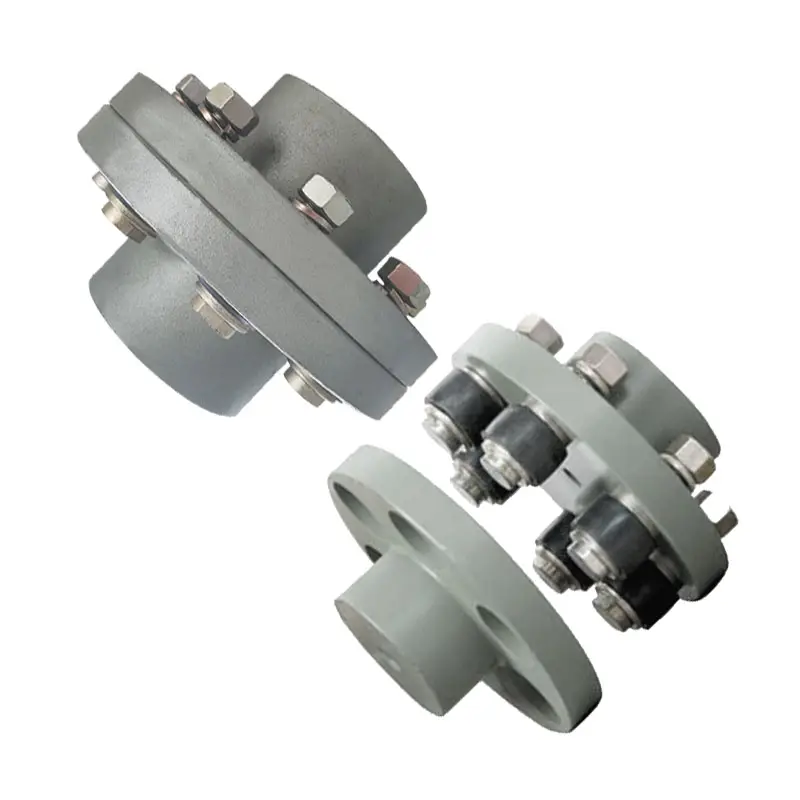“`html

Introduction to Flange Coupling for Gear Coupling in Soup Canning Lines
Flange coupling plays a pivotal role in the smooth operation of gear couplings, especially in the demanding environment of soup canning lines. This type of coupling is renowned for its reliability, durability, and ease of maintenance, making it an ideal choice for transmitting torque in a highly synchronized manner.
Features of Flange Coupling
- High Torque Transmission: Capable of transmitting high levels of torque efficiently, ensuring smooth operation of soup canning lines without compromising performance.
- Durability: Constructed from high-quality materials, flange couplings are built to withstand the rigors of continuous operation in a production environment.
- Easy Maintenance: Designed for easy access to components, facilitating quick maintenance and minimal downtime.
- Precision Alignment: Ensures perfect alignment of connected shafts, reducing wear and tear on equipment.
- Versatility: Suitable for a wide range of applications, from light-duty to heavy-duty machinery.
Applications and Advantages of Flange Coupling in Soup Canning Lines
Flange coupling is particularly suited for use in soup canning lines due to its robust construction and ability to transmit torque efficiently. The following points highlight its suitability and advantages:
- Reliability: Essential for continuous production lines, where downtime can be costly.
- High Alignment Accuracy: Ensures efficient transfer of power and reduces mechanical stress on the system.
- Shock Absorption: Offers some degree of shock absorption, protecting machinery from sudden torque spikes.
- Thermal Resistance: Capable of operating in high-temperature environments common in canning operations.
- Easy Integration: Compatible with existing machinery, simplifying the upgrade or maintenance process.

Working Principle of Flexible Coupling
Flexible couplings, including flange types, operate on the principle of accommodating misalignment between shafts while transmitting torque. This is achieved through the coupling’s ability to flex without causing significant stress on the connected equipment. The flexibility also aids in absorbing vibrations and compensating for axial, radial, and angular misalignments.
The core components of a flexible coupling include two flanges that attach to the respective shafts and a flexible element that connects the flanges. When torque is applied, the flexible element deforms to accommodate misalignments while maintaining torque transmission between the shafts.
This functionality is particularly important in applications like soup canning lines, where precision and reliability are paramount. The flexible coupling’s ability to adapt to alignment changes and absorb operational stresses contributes significantly to the longevity and efficiency of the production line.
Choosing the Right Flange Coupling
Selecting the appropriate flange coupling for your soup canning line involves considering several critical factors:
- Torque Requirements: Assess the maximum torque needed and choose a coupling that can handle the load with a suitable safety margin.
- Misalignment Tolerance: Evaluate the type and degree of misalignment expected in your application to ensure the coupling can accommodate it without performance loss.
- Operating Conditions: Consider the environmental conditions, such as temperature and exposure to corrosive substances, to select a coupling made from compatible materials.
- Size and Space Constraints: The physical dimensions of the coupling should fit within the available space without interfering with other components.
- Maintenance Requirements: Opt for couplings that offer ease of maintenance, allowing for quick repairs and minimal downtime.

Maintenance of Flange Coupling
Regular maintenance of flange coupling is crucial for ensuring the longevity and reliability of your soup canning line. This includes periodic inspection for wear and tear, proper lubrication of moving parts, and timely replacement of components that show signs of deterioration. Proper maintenance not only extends the life of the coupling but also maintains the efficiency and safety of the entire production line.
About HZPT
HZPT, established in 2006, is a leading manufacturer and exporter specializing in the design, development, and production of couplings. With our 16-year design and research team, we offer customized solutions tailored to the global market. Our comprehensive quality inspection system from raw materials to finished products ensures the highest product standards, reflected in our CE and TUV certifications.
Our commitment to customer satisfaction drives our mission. We offer an extensive range of couplings, including radial elastic couplers, tire couplers, universal couplers, and many more, designed for various industrial applications. Our products are known for their high quality, competitive pricing, and comprehensive range. With a primary market in Europe and America, we are your ideal partner, looking forward to cooperating with you to build successful business relationships worldwide.
“`
